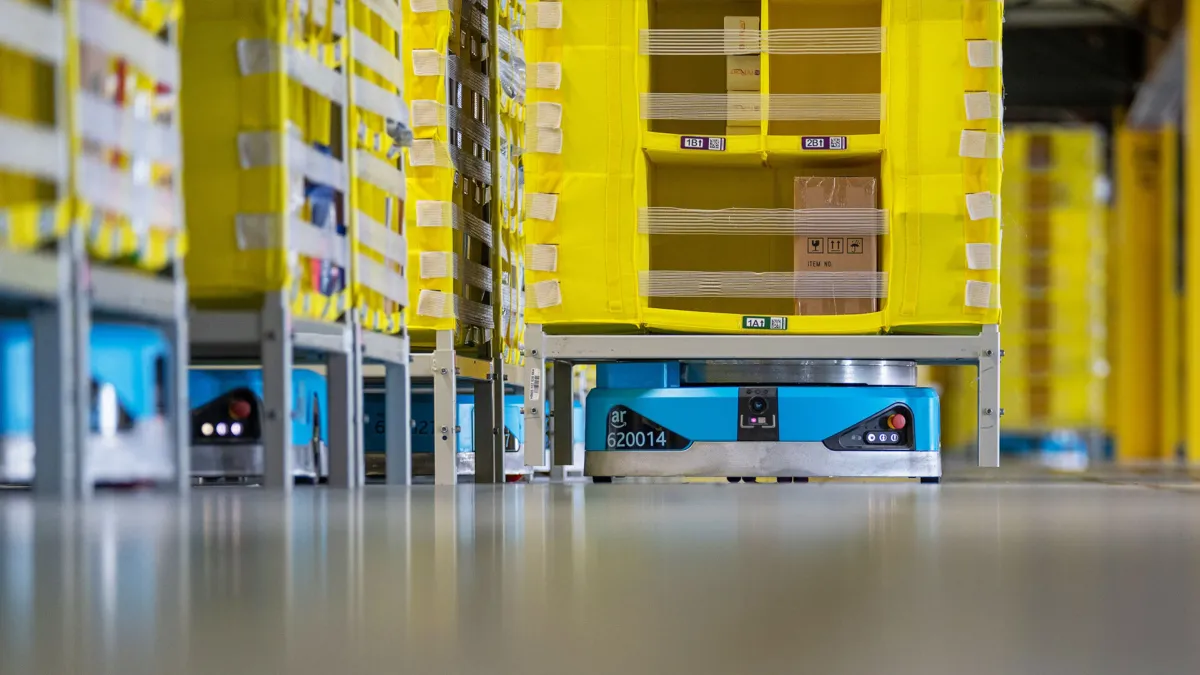Amazon's New Robots and the Future of Work
Amazon is taking automation to the next level with a new wave of advanced machines that can perform more complex and diverse tasks thanks to artificial intelligence and robotics improvements.

Amazon is no stranger to automation. The e-commerce giant has been using robots to move products around its warehouses for years, which has helped cut down on the amount of money spent on labour while improving efficiency. But now Amazon is taking automation to the next level with a new wave of advanced machines that can perform more complex and diverse tasks thanks to artificial intelligence and robotics improvements. The automation technology allows Amazon to fulfill more orders in a shorter time.
These cutting-edge robots are not only able to collaborate with people but can also function independently of them. They have increased their speed and accuracy in picking, packing, sorting, and shipping. In addition to this, they can adjust to new environments and gain knowledge from their own experiences. Some even have distinct personalities and can engage in conversation with employees and customers.
One of these innovative robots is called Ernie, and it has a robotic arm that can retrieve items from bins and place them in boxes. Ernie was created to alleviate some of the bendings and reaching required of human workers when retrieving products. Ernie is also capable of working more quickly and accurately than humans, which results in fewer mistakes and less waste.
Another example is the autonomous vehicle known as Bert, which can move freely around the warehouse while also transporting heavy loads. Bert can avoid collisions with people and other objects and can operate independently or remotely. Bert can assist in moving products from one location to another, which frees up human workers to perform tasks that require more creativity and complexity.
Kermit, a delivery robot that can bring packages to customers' doors, is a third illustration of this trend. Kermit is a compact vehicle with four wheels and can drive on sidewalks and roads. In addition, it can climb stairs and ring doorbells. Kermit can communicate with customers via a screen and a speaker and detect if someone is trying to tamper with it.
These are a few examples of the brand-new robots that Amazon is introducing into its warehouses and fulfillment centers worldwide. According to the company, these robots are not designed to replace human labourers but to supplement them to simplify and secure their jobs. Amazon claims to have invested more than $300 million in training programs for its employees, intending to assist those employees in gaining new skills and progressing further in their careers.
On the other hand, some are concerned about these robots' effect on the job market and society in general. They contend that increased use of technology will result in a loss of jobs, decreased wages, and increased inequality. They are also concerned about the moral and social repercussions that may result from having machines that are capable of making decisions and interacting with humans.
The discussion regarding automation is not new, but it is becoming more pressing due to the rapid advancement of technology. The introduction of new robots at Amazon is illustrative not only of how automation is reshaping the world of work but also of how it presents new challenges and opportunities for workers, consumers, and policymakers.



